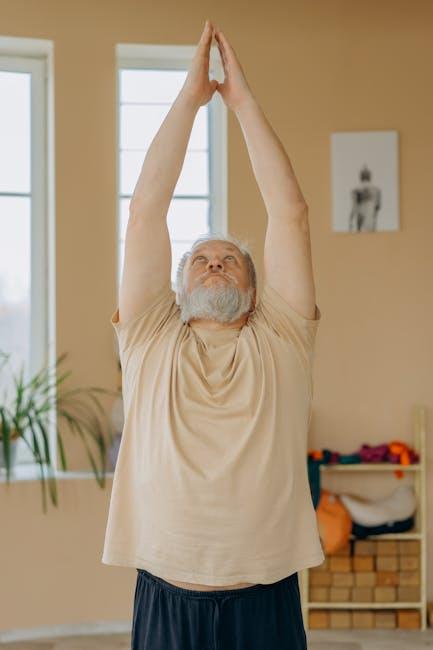Creating a workout plan tailored to your fitness goals is not just about hitting the gym and breaking a sweat; it’s about strategically aligning your exercises with your aspirations to maximize results. Whether you’re aiming to build muscle, shed pounds, or enhance endurance, understanding how to craft a personalized workout regimen is crucial for success. In this guide, we will walk you through the essential steps to develop a plan that not only meets your unique objectives but also fits seamlessly into your lifestyle. With a confident approach and clear direction, you’ll be equipped to take control of your fitness journey and achieve the results you desire. Let’s dive in and design a workout plan that works for you.
Understanding Your Fitness Goals and Needs
Before embarking on your fitness journey, it’s crucial to identify and understand what you truly want to achieve. Whether you’re aiming for weight loss, muscle gain, or improved endurance, knowing your fitness objectives will guide you in crafting an effective workout plan. Clarity is your first step: take a moment to define your goals and consider factors such as your current fitness level, available time, and personal interests.
- Set Specific Goals: Instead of vague aspirations like ”get fit,” aim for precise targets such as ”lose 10 pounds in three months” or “run a 5K by next spring.”
- Assess Your Needs: Consider any physical limitations or medical conditions that might affect your workout plan. Tailor exercises to accommodate these needs while still challenging yourself.
- Consider Your Lifestyle: Your schedule and personal preferences will influence the type of workouts you choose. Ensure your plan is realistic and fits seamlessly into your routine.
- Stay Flexible: Your goals may evolve over time, so be prepared to adjust your plan as necessary to stay aligned with your changing aspirations.
By focusing on these foundational elements, you can create a workout plan that not only aligns with your fitness goals but also enhances your overall wellness journey.

Designing a Balanced Workout Routine
Crafting a workout routine that aligns with your fitness aspirations requires careful consideration of various components. Begin by identifying the core elements that will shape your plan. A well-rounded regimen typically includes a mix of cardiovascular exercises, strength training, and flexibility work. This diverse approach not only boosts overall fitness but also reduces the risk of injury and keeps the routine engaging. Here’s a basic framework to get you started:
- Cardio: Aim for at least 150 minutes of moderate aerobic activity or 75 minutes of vigorous activity per week. Activities can include running, cycling, or swimming.
- Strength Training: Incorporate exercises targeting major muscle groups at least twice a week. Focus on exercises like squats, deadlifts, and bench presses.
- Flexibility and Mobility: Dedicate time to stretching and mobility exercises. Yoga or pilates sessions can enhance flexibility and prevent stiffness.
Balance is key, so adjust the intensity and duration based on your current fitness level and goals. Remember to listen to your body and allow for adequate rest and recovery days to ensure sustainable progress.

Incorporating Flexibility and Recovery Strategies
Achieving your fitness goals isn’t just about pushing harder and lifting heavier. It’s crucial to incorporate flexibility and recovery strategies into your workout plan to ensure long-term success and prevent injury. Prioritize stretching exercises that enhance your range of motion and improve muscle elasticity. Dynamic stretches such as leg swings or arm circles can be integrated into your warm-up routine, while static stretches like hamstring or quadricep stretches are perfect for your cool-down.
Beyond flexibility, focus on recovery techniques that allow your body to heal and strengthen. Consider adding these strategies to your plan:
- Active recovery days with light activities such as walking or yoga to promote blood flow and reduce muscle stiffness.
- Foam rolling to alleviate muscle tightness and enhance circulation.
- Adequate sleep to support muscle repair and growth.
- Hydration and nutrition to fuel recovery and performance.
Remember, a balanced approach incorporating both intensity and rest will propel you towards your fitness aspirations more effectively.
Tracking Progress and Adjusting Your Plan
Consistency is key, but flexibility is equally important when it comes to achieving your fitness goals. Regularly monitoring your progress ensures that your workout plan remains effective and aligned with your evolving objectives. Here are some strategies to help you stay on track:
- Set Milestones: Break down your long-term goals into smaller, achievable milestones. This will not only provide you with a clear roadmap but also allow you to celebrate small victories along the way.
- Track Your Metrics: Whether it’s the number of reps, weight lifted, or distance covered, keeping a log of your workouts will help you identify patterns and areas for improvement.
- Listen to Your Body: Adjust your plan based on how your body responds. If you’re feeling fatigued, consider incorporating rest days or low-intensity workouts to prevent burnout.
- Seek Feedback: Engage with a trainer or join a fitness community for insights and advice. Fresh perspectives can provide motivation and help refine your approach.
Embrace the process of trial and error, knowing that adjustments are part of the journey. By staying attuned to your progress and being open to change, you’ll craft a workout plan that’s not only effective but also sustainable.




